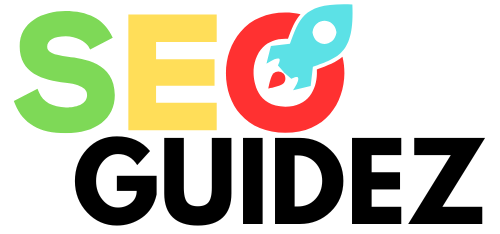In the world of data analysis, how we visualize information can drastically affect our understanding of it. DGLux5 is one of the most advanced platforms for data visualization, empowering users to create highly interactive and visually appealing dashboards. But behind the evolution of DGLux5, there is a name that has become synonymous with innovation and progress in this field: Jason. His contributions to DGLux5 have played a pivotal role in reshaping how data can be displayed and interacted with. This article will dive deep into Jason’s role within DGLux5, exploring how his work has not only advanced the tool itself but also revolutionized the data visualization industry as a whole.
What is DGLux5?
DGLux5 is an advanced platform that allows users to create dynamic and interactive data visualizations. It enables users to easily convert complex data into intuitive dashboards, making it simpler to understand trends, patterns, and insights that would otherwise be difficult to grasp. The platform stands out due to its ability to integrate a wide range of data sources and provide customizable, real-time visualizations. Whether you are an analyst, a business owner, or a decision-maker, DGLux5 offers a robust toolkit that makes data exploration engaging and actionable.
Who is Jason?
Jason, the mastermind behind many of DGLux5’s key features, has been an integral part of the platform’s development. With an extensive background in both software development and design, he has continually pushed the boundaries of what is possible with data visualization. His work focuses on improving user experience, introducing innovative features, and ensuring the platform remains accessible to both technical and non-technical users alike. Jason’s approach combines his technical skills with a keen understanding of design, ensuring that the visual elements of DGLux5 aren’t just functional but also aesthetically pleasing and intuitive.
Why is Jason Important in DGLux5?
Jason’s contributions to DGLux5 are crucial because they have shaped the platform into what it is today. His expertise has enabled DGLux5 to offer a range of powerful features that distinguish it from other data visualization tools on the market. His work has made DGLux5 a go-to platform for businesses and individuals who need to make sense of complex data in an easy-to-understand and actionable way. Through his innovations, Jason has not only made DGLux5 a highly efficient tool but also one that is adaptable to a variety of industries and use cases.
Key Features of DGLux5
DGLux5 is packed with features designed to cater to a wide range of data visualization needs. One of its standout features is the ability to build fully customizable dashboards. Users can choose from a variety of templates or create their own from scratch. The platform also supports real-time data integration, making it ideal for businesses that need to keep track of constantly changing metrics. The drag-and-drop functionality further enhances its ease of use, ensuring that even those without technical expertise can build sophisticated visualizations. Whether you are tracking sales performance, analyzing web traffic, or monitoring operational data, DGLux5 provides the tools necessary to turn raw data into insights.
Jason’s Innovations in DGLux5
Jason has introduced several key innovations within DGLux5 that have significantly enhanced the platform’s functionality. One of his most impactful contributions is the introduction of advanced customization options. Through his work, users can now adjust the appearance of their dashboards to match specific branding or visual preferences. Additionally, Jason’s efforts in improving real-time data processing have enabled DGLux5 to handle large datasets more efficiently. This means users can now make data-driven decisions faster than ever before, without the delays caused by slow data processing or rendering times.
How DGLux5 Revolutionized Data Visualization
The rise of DGLux5 marks a shift in how we approach data visualization. Before platforms like DGLux5, visualizing complex datasets often required a great deal of manual effort and technical know-how. DGLux5 simplifies this process by offering a suite of tools that automate many aspects of visualization creation. The platform’s user-friendly interface allows even those with limited technical experience to create beautiful, insightful visualizations. As a result, businesses of all sizes can harness the power of data without needing to rely on specialists or complex coding.
Use Cases of DGLux5
DGLux5 is versatile and can be applied in many different industries. In healthcare, for example, it is used to track patient outcomes, monitor hospital performance, and visualize healthcare trends. In retail, businesses use DGLux5 to analyze sales data, monitor inventory levels, and optimize supply chain operations. Its ability to integrate with various data sources, such as databases, spreadsheets, and cloud services, makes DGLux5 a valuable tool for virtually any sector. DGLux5 is capable of meeting a wide range of needs.
Jason’s Approach to Design and Functionality
Jason’s work is characterized by a user-centric design philosophy. He believes that the best tools are those that prioritize the user experience while maintaining technical robustness. In DGLux5, this is evident in the streamlined workflows and intuitive interface that he has worked to perfect. Jason has placed a strong emphasis on making sure that the platform is easy to navigate, with clearly defined paths for creating and interacting with data visualizations. His goal is to make complex tasks as simple as possible, ensuring that users can focus on deriving insights from the data rather than grappling with technical issues.
Future Prospects for DGLux5
Looking ahead, DGLux5 continues to evolve. Jason’s ongoing work ensures that the platform remains at the forefront of data visualization technology. Future updates will likely include more AI-powered features, such as predictive analytics and automated insights, that will further empower users to make data-driven decisions. As data continues to play a central role in business strategy, DGLux5’s potential to revolutionize how organizations interact with their data is bound to grow.
How Jason’s Work Continues to Shape DGLux5’s Evolution
Jason’s work has laid the foundation for the continued growth of DGLux5. His contributions have not only made the platform more powerful and user-friendly but have also set a precedent for future innovations. As the demand for data visualization tools grows, Jason’s influence will likely be felt in future iterations of DGLux5. Also, ensuring that it remains one of the most cutting-edge platforms in the field.
Challenges Faced by Jason in DGLux5 Development
Developing a tool as sophisticated as DGLux5 is not without its challenges. Jason has had to overcome numerous technical barriers, such as optimizing the platform for speed without sacrificing quality. Another challenge has been balancing the desires of users for more advanced features with the need to maintain simplicity and accessibility. Despite these obstacles, Jason’s determination and problem-solving skills have allowed him to continuously improve DGLux5, making it the robust tool it is today.
Jason’s Collaboration with Other Teams
Jason’s success in improving DGLux5 can be attributed, in part, to his collaborative approach. He has worked closely with other teams, including product designers, software engineers, and data scientists, to ensure that all aspects of the platform come together seamlessly. This cross-department collaboration has fostered an environment of innovation, where new ideas are shared and refined to create a product that exceeds user expectations.
The Legacy of Jason’s Work in DGLux5
Jason’s work on DGLux5 will undoubtedly have a lasting impact on the field of data visualization. His focus on user-friendly design, combined with his technical innovations. He has set a new standard for what data visualization tools can achieve. As DGLux5 continues to evolve, Jason’s legacy will live on through the platform’s continued success.
Conclusion
Jason’s contributions to DGLux5 have been instrumental in shaping the platform into the powerful and user-friendly tool it is today. His work has revolutionized how businesses and individuals approach data visualization, making it more accessible, intuitive, and impactful. As DGLux5 continues to grow and evolve, Jason’s legacy will undoubtedly continue to influence the field, helping to drive innovation and improve the way we make sense of data.
FAQs
What is DGLux5 used for?
DGLux5 is a data visualization platform used to create interactive dashboards and visualizations from complex data sets.
How did Jason contribute to DGLux5?
Jason has contributed by introducing innovative features, improving usability, and ensuring the platform is both powerful and accessible.
What industries use DGLux5?
DGLux5 is used in various industries, including healthcare, retail, finance, and marketing, for data analysis and visualization.
What makes DGLux5 different from other visualization tools?
DGLux5 stands out due to its real-time data integration, user-friendly interface, and customization options.
What can we expect from the future of DGLux5?
Future updates to DGLux5 will likely include AI-powered features and further improvements in data processing and visualization capabilities.

